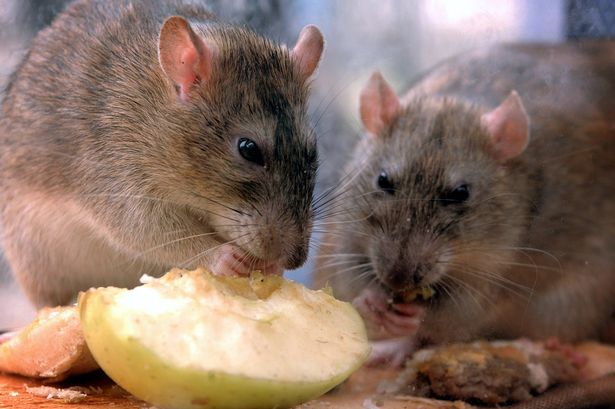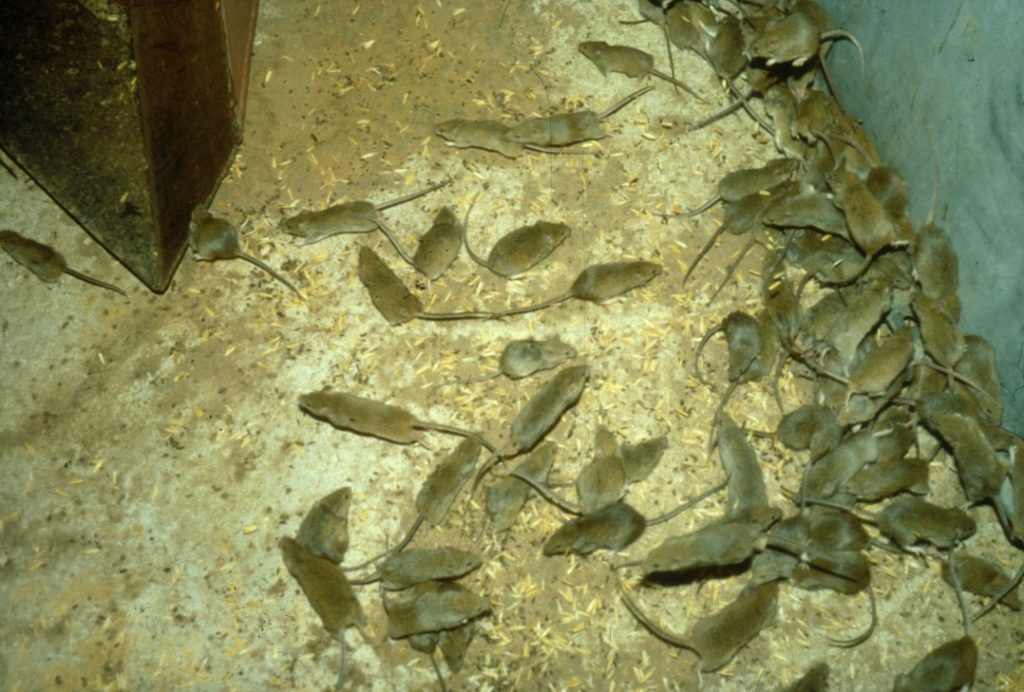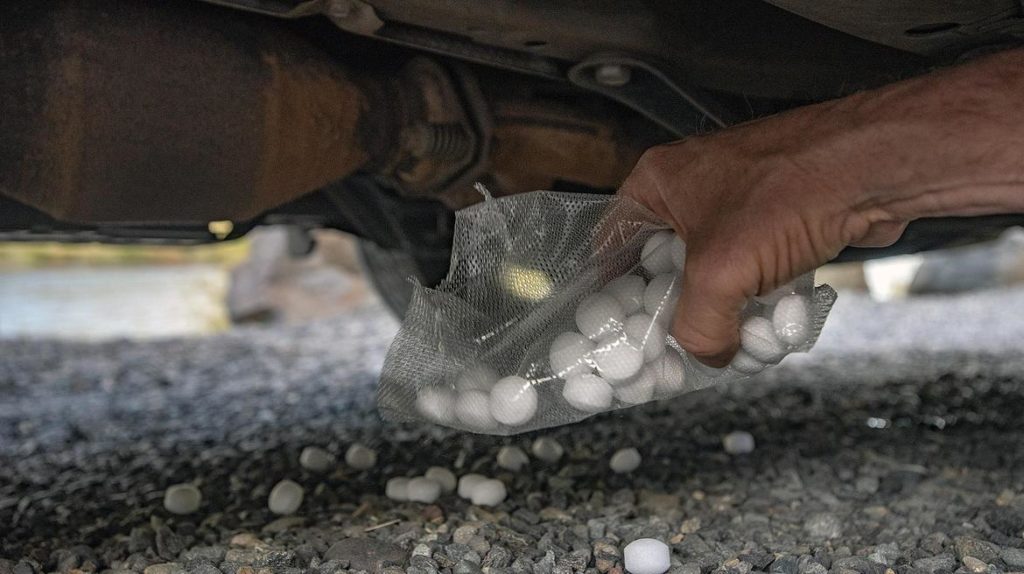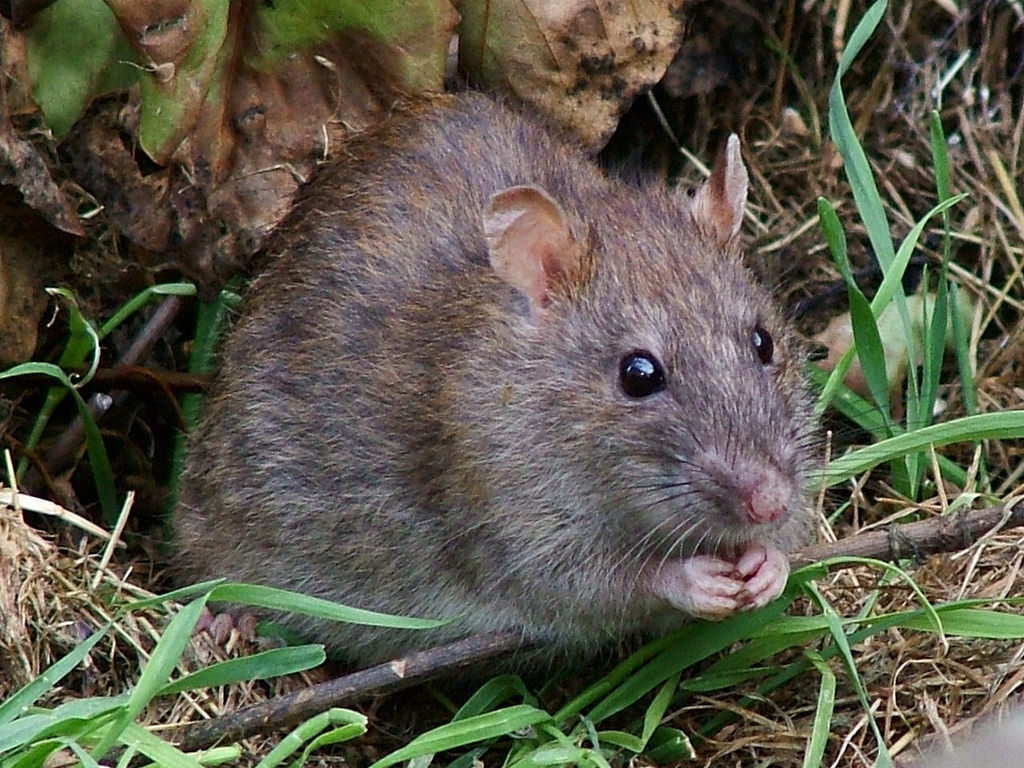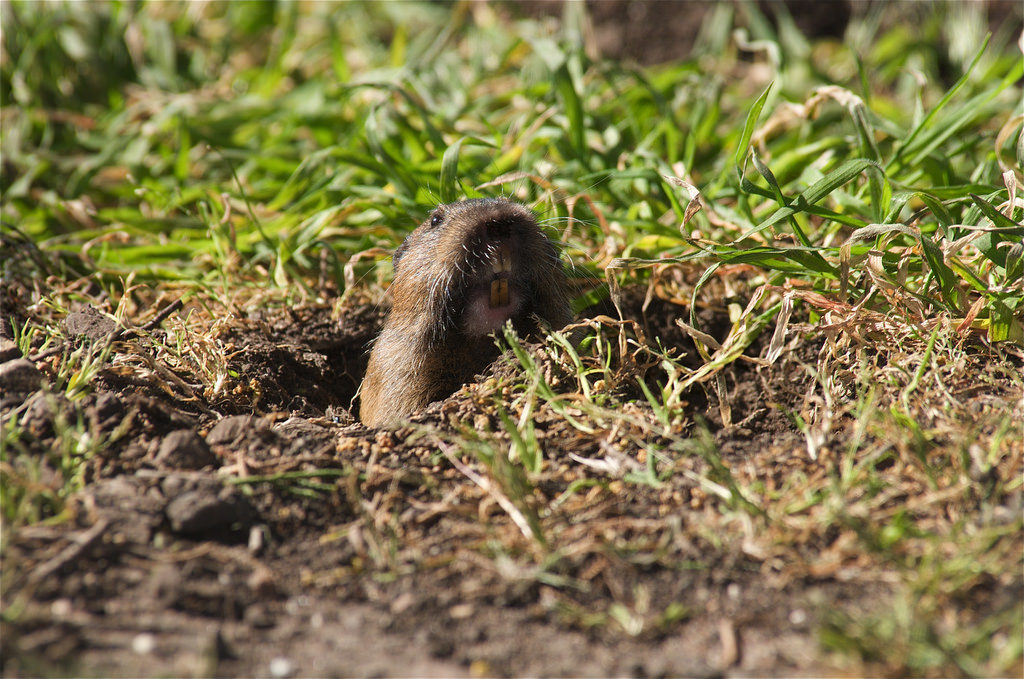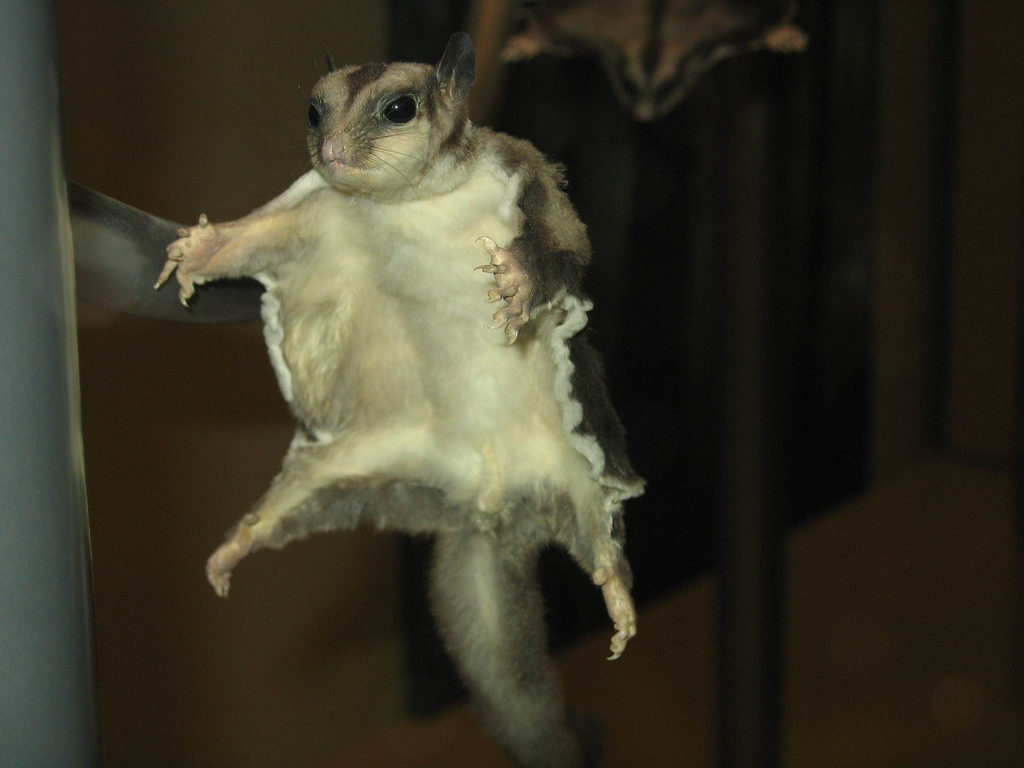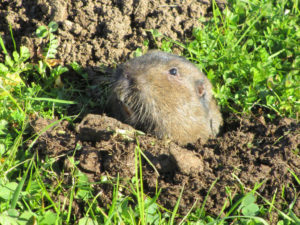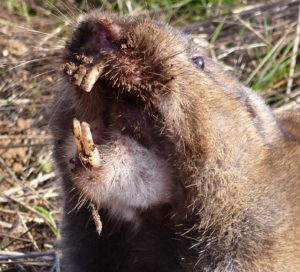
Gophers are among the most devastating rodents one can find. These destructive animals are medium-sized with small ears and mostly-hairless tails. They feed on grass, roots and bulbs. They like to burrow in open spaces such as grounds, fields and backyards of houses. Gophers prefer living underground and rarely surface during daytime. They have large incisors and strong front legs with sharp claws that they use for burrowing. Once they are on your property, they start making tunnels all around. They have also been known to damage the foundations of structures by making multiple burrows underground and loosening the soil. They have the unique ability to crawl backwards. Their tails help them navigate tiny, dingy holes in reverse making it easy for them to move around and find their way.
They have fur-lined pockets inside of their cheeks, earning them the name pocket gophers. These pockets can hold a surprisingly large amount of food, enabling them to fill it and go back to their underground spot to enjoy their meal in peace.
Because of their diet, gophers are found on all grassy areas. Their presence in backyards, lawns and golf courses, though very common, are very difficult to detect. This is because they spend most of their time underground and hardly ever surface. On top of that, while burrowing, they make tiny mounds out of the dirt they have pushed out, which people often confuse to be mole-hills and take measures against mole-infestation. This fails to solve the gopher-problem and all the money and efforts employed are wasted!
Gophers are very detrimental to farmers and people who like to do backyard-gardening. Gophers eat away the roots and bulbs, and even flowers causing plants to die-off or produce subpar yields, causing major losses financially. Apart from this, gophers also gnaw the underground cables and wires laid and the pipes that run below surface.

The menace they cause is huge and many programs have been setup to eradicate them. However, they always find a way to come back. Some of the incidences of Gopher menace and actions taken against it are reported below:
Gophers have moved up on most wanted list
Tim Krohn | Jan 9, 2021
“The “bounty” was an annual ritual of the County Board setting the bounty price for pocket gophers and striped gophers, which are officially called thirteen-lined ground squirrels. For the uninitiated, gopher bounties have been paid by rural townships across the state for more than a century.
Meyer asked the board to set a $1 per gopher reimbursement to townships in the coming year. Paap offered robust and nostalgic support for the program. As a farm kid, he and other boys spent a lot of time trapping gophers and said it’s a tradition a lot of farm dads and grandpas hand down.
The board was being asked to set this year’s bounty reimbursement to townships at $1 per gopher. When asked if he recalled how much the bounty was decades ago when he was trapping gophers, Paap said he remembered it well. “It was $1.”Commissioner Mark Piepho, noting the unchanged bounty fee, said, “We’re getting our money’s worth.”
Meyer noted the annual budget for gopher bounty reimbursements is $100 a year — out of a county budget of $114 million. Bounties for gophers, as well as ground hogs, crows and in the past rattlesnakes, have been enshrined in state law. Since at least 1904, state statutes on bounties were set and they’ve been updated ever since.
While the striped gophers are cute little things, the pocket gopher — with its hairless tail, large beaver-like teeth and gray coat — lacks any cuteness factor. Many people have never seen a pocket gopher because they spend virtually their entire life digging underground. Those little mounds of dirt you might see in road ditches, or even in your yard, are courtesy of pocket gophers.In recent years there also has been bonus money added to Minnesota townships’ bounties, courtesy of telecommunications companies. Some telecommunications firms offer to double the bonus in an effort to limit damage done by pocket gophers. Like beaver, pocket gophers’ long teeth continually grow and they need to chew on hard things to keep them worn down and sharp. Turns out the pocket gophers have developed a taste for bundled fiber-optic wires. The underground cables are wrapped in an outer jacket, but pocket gophers still gnaw through the armored coating, costing telecommunications companies a lot of money in repairs.”
City Commission Receives Update on Squirrel and Gopher Abatement
STAFF REPORT | Published on Thursday, October 8, 2020 | 11:48 am
“The overpopulation of ground squirrels and gophers in areas like Brookside Golf Course and Hahamongna Watershed Park can become problematic if left unchecked, according to a city staff report to the Parks and Recreation Commission.
Community Services heard an update on squirrel and gopher abatement at its meeting on Tuesday.
“The overpopulation of these pests can pose a public health concern due to the diseases they may carry,” city staff wrote in a report included in the agenda. “Some of the diseases that could be transmitted to humans include typhus and bubonic plague. Additionally the overpopulation of these pests can damage infrastructure, habitat and maintenance equipment.”
According to documents included in the agenda, the city’s parks division has partnered with the Los Angeles County Department of Agriculture to manage the overpopulation of squirrels and gophers.
The city used a variety of methods to catch the rodents, including bait traps and diphacinone. Diphacinone is an anticoagulant bait that comes in a pellet, liquid and powder forms.
Park staff do not engage in any chemical pest control [such as fumigants or bait stations]; however, efforts have been made to explore alternative methods to control overpopulation,” according to a staff report. “The Department of Pesticide Regulation (DPR) and the U.S. Environmental Protection Agency (EPA) have determined that carbon monoxide delivery devices will be regulated as pest control devices, not as pesticides. Park staff has contacted vendors to demonstrate this method to evaluate the applicability to park operations. No determinations have been made at this time.”
Pocket gophers and ground squirrels are classified as nongame mammals by the California Department of Fish and Game. The populations may be controlled at any time by legal means.Pocket gophers can inflict damage by invading gardens and lawns as well as agricultural crops. They can damage trees and also gnaw on and damage plastic water lines and lawn irrigation systems. Their mounds can interfere and damage lawn mowing equipment. The mounds also provide a starting place for invasive weeds in landscape and agricultural areas. Pocket gopher burrows can weaken ditch banks and canals. Irrigation water diverted through their tunnels can be carried away and can lead to soil erosion.”
Though gophers cause all these destructions, they play a very important role in nature. Their burrowing aerates the soil, making it healthy for plants to grow. They effectively mix soil with the fecal matters present making it more fertile. Their actions also lead to more minerals coming to the surface of the soil, thus speeding up the process of formation of new soil.
Thus, it makes it very important to make gophers stay away from our business, while taking care that they are not destroyed by us.
We, at C-Tech Corporation, understand the plight and have developed green, environment- friendly, non-hazardous, non-toxic, non-mutagenic and non-carcinogenic solutions to combat the problem.
Our product, Rodrepel™, is a rodent and animal repellent that works on the principle of aversion. Its mechanism is tried-and-tested and is proven to be effective not only against gophers but also other such rodents including mice, rats, squirrels and beavers.
The smell of the product triggers a fear response in the rodents approaching it. Aggressive rodents that still tries to gnaw experiences severe temporary distress in their mucous membrane. After this unpleasant encounter, the animal instinctively perceives it as something it should stay away from and stores this information for future reference. Rodents are extremely social animals and the fact that certain rodents are repelled is mimicked by others as well. Thus, the other rodents too stay away from the applications treated with Rodrepel™. This experience is imprinted within the animal’s memory and passed on to its progeny, creating natural aversion towards the product, thus protecting treated applications.
Employing this technique is not only sustainable for the environment, it is also cost-effective because of the long term protection it provides.
Rodrepel™ is available in the form of a masterbatch, liquid concentrate, lacquer, wood polish additives and sprays.
The masterbatch can be incorporated in cable sheathings and pipes while being manufactured to keep the gophers from chewing on them. The product in the form of liquid concentrate can be diluted in paints and organic solvents and applied to applications as well. The lacquer which is a topical applicant can be directly applied to the already installed wires and cables and area around the house. The wood polish additives can be mixed with the wood polish and applied on wooden surfaces, like the fence around your gardens and lawns and on areas where the agricultural produce are stored. The spray can be directly used on various surfaces and can be sprayed wherever the possible entry points are. It is an easy-to-use method.
This will effectively prevent the gophers from entering and destroying your manicured lawns and gardens in full bloom.
RodrepelTM is cost-effective, inert, and thermally stable and does not degrade on exposure to heat and sunlight. It is RoHS, RoHS2, RoHS3, REACH, NEA, EU BPR, APVMA compliant and FIFRA exempted.
Contact us at technical.marketing@ctechcorporation.com to know more about the use of our repellent products against rodent menace.
Also, visit our websites:
http://www.ctechcorporation.com/
Follow our Facebook pages at:
1] https://www.facebook.com/Combirepel-411710912249274/
2] https://www.facebook.com/Termirepel-104225413091251/
3] https://www.facebook.com/Rodrepel-120734974768048/
Follow us on our Twitter pages at:
1] https://twitter.com/rodrepel




